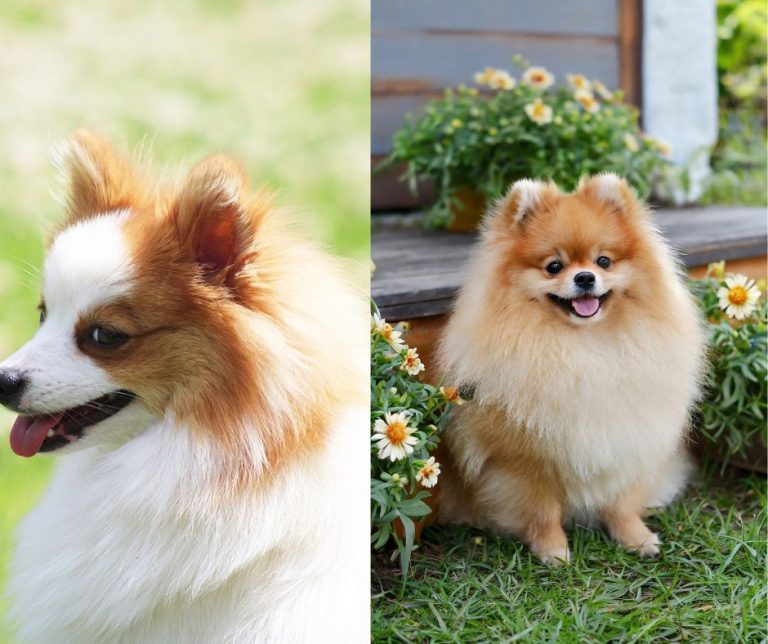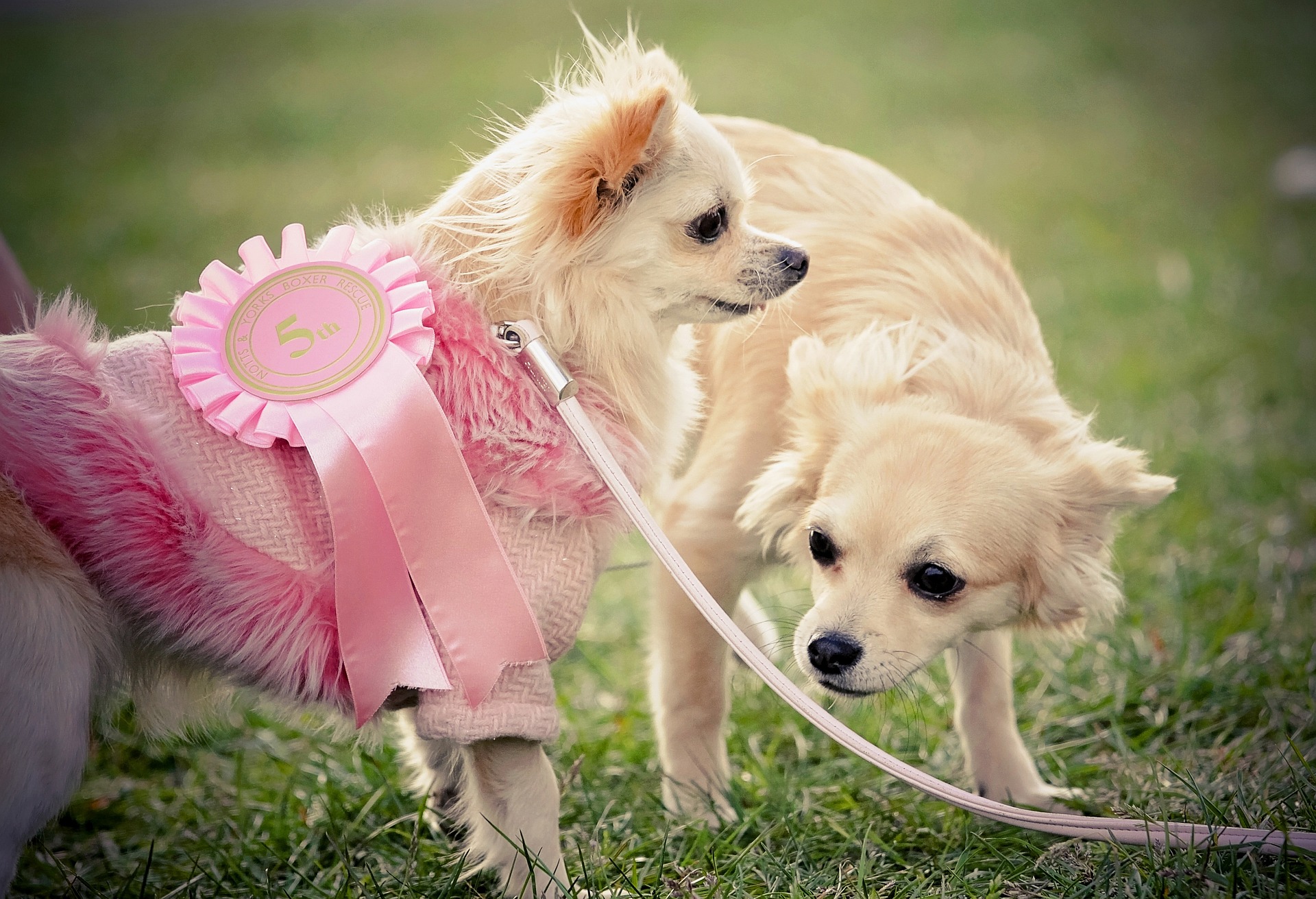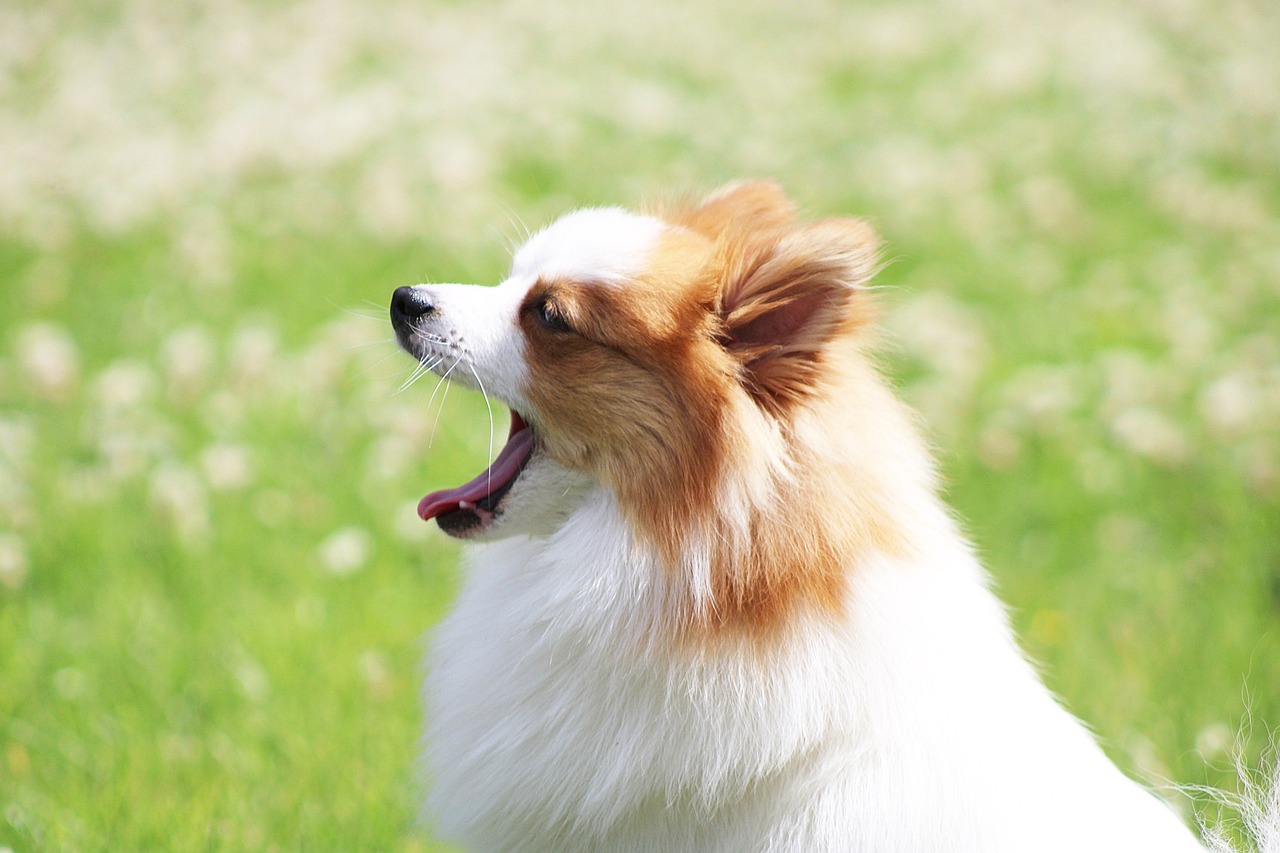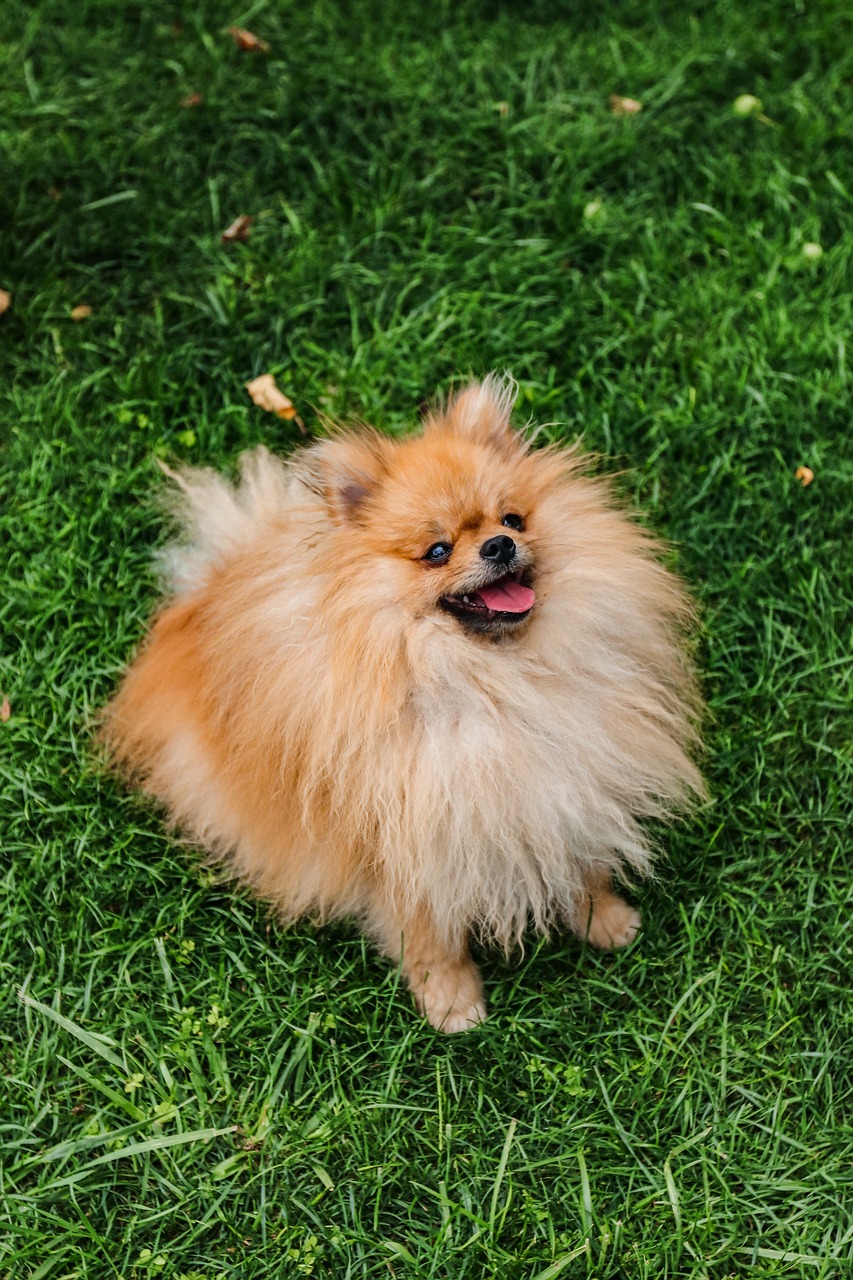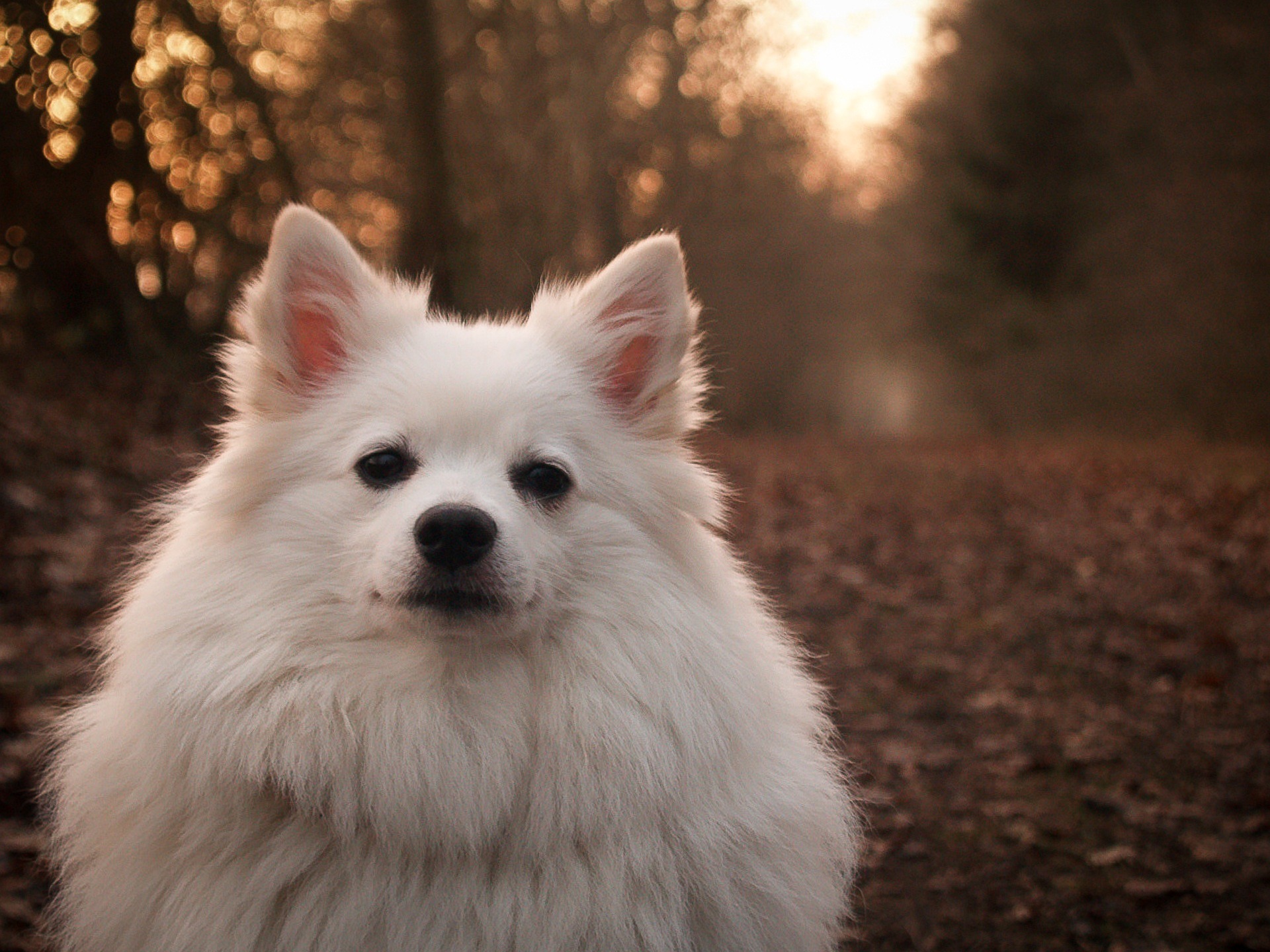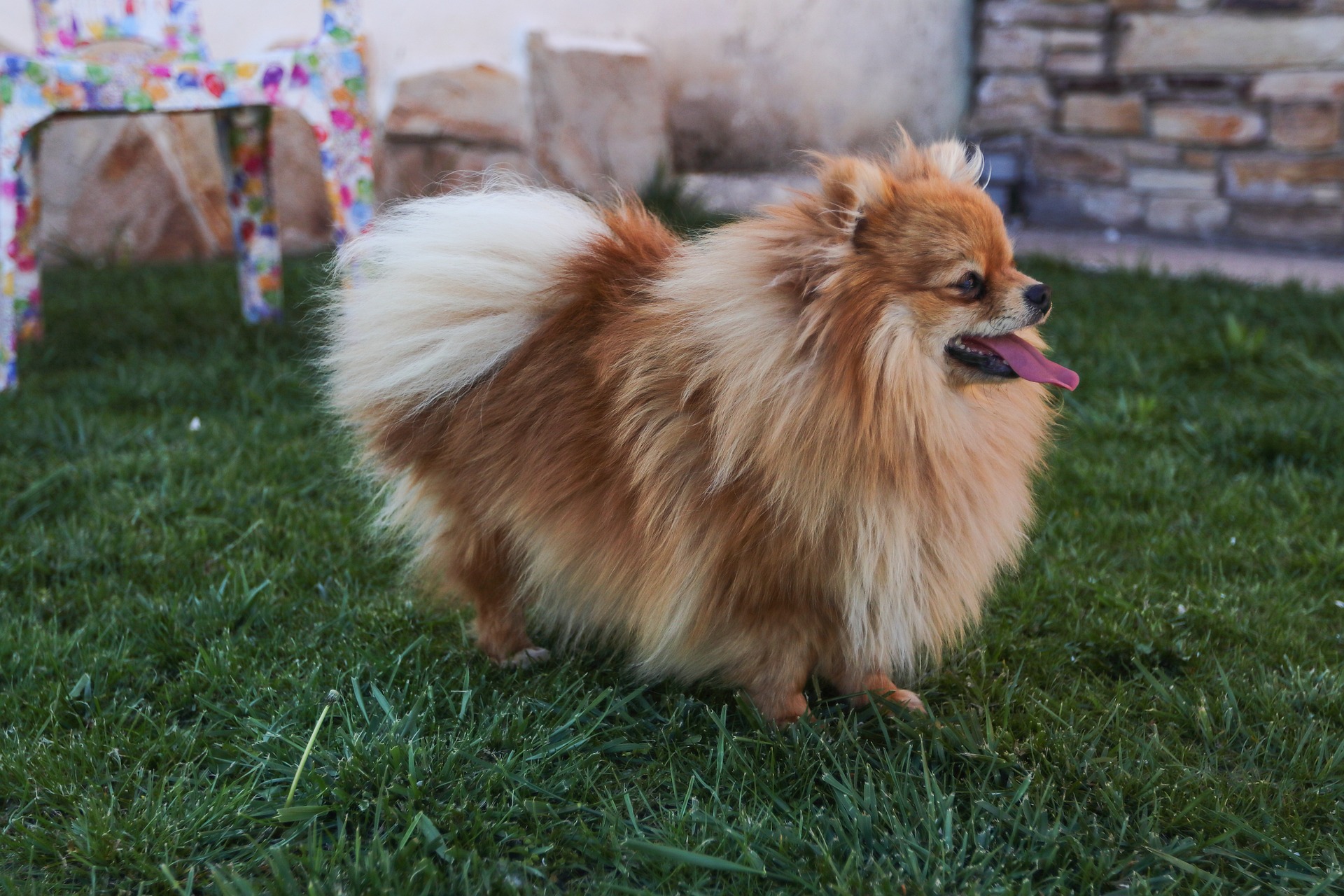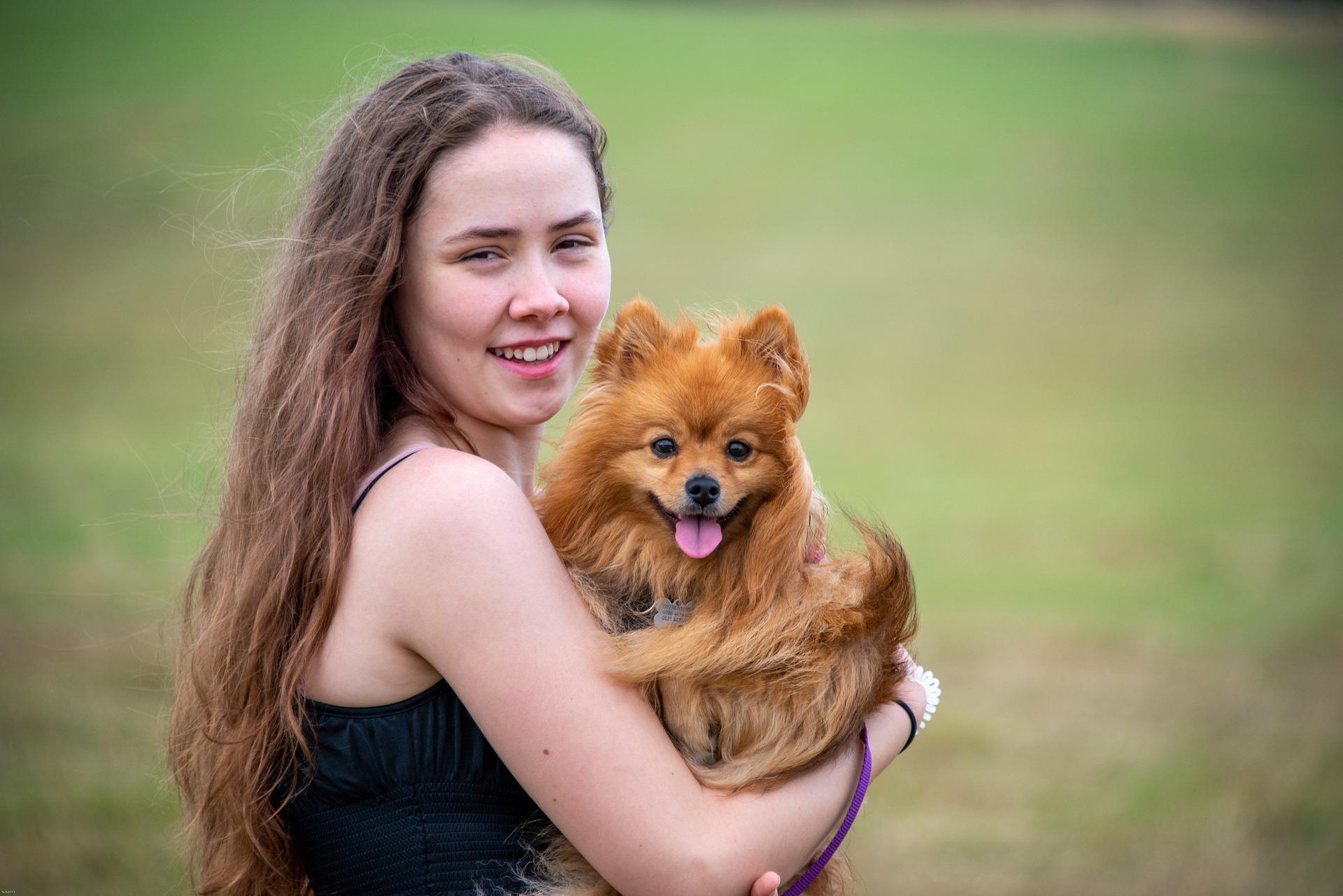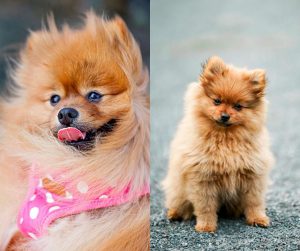When looking at the charming world of fluffy spitz-type dogs, it’s easy to be drawn to the spirited Pomeranian and the attentive German Spitz.
While at first glance they may look similar, with their distinctive foxy faces and luxurious coats, upon closer examination, it’s clear that each breed has its unique set of traits and qualities.
Both breeds indeed share a common ancestry, which paints a rich historical tapestry that traces back to robust sled-pulling dogs from the Arctic regions.
But over time, through selective breeding practices and adapting to different cultures, the German Spitz and Pomeranian have evolved into the distinctive breeds we know today.
Understanding these breeds goes beyond their shared lineage.
The German Spitz is often larger, with a variety of coat colors and a poised demeanor, while the Pomeranian is more compact, with a bubbly personality that delights its admirers.
These dogs not only carry themselves differently but also come with varying needs in terms of grooming, socialization, and exercise.
The choice between the two can shape an owner’s daily routine, so learning about their characteristics is essential for prospective dog owners.
Health and temperament play significant roles in the lives of both German Spitz and Pomeranian dogs.
Their lifespans, predisposed health issues, and attitudes towards training and socializing are important to consider.
They are eager to please but have distinct needs that, when met, can lead to a harmonious household.
Choosing the right breed involves understanding these aspects and how they align with an owner’s lifestyle and capabilities.
Let’s take a deeper look into the German Spitz vs Pomeranian breed comparison.
Key Takeaways
- German Spitz and Pomeranian dogs are distinct breeds with different characteristics
- Prospective owners should consider size, grooming needs, and energy levels
- Health, behavior, and training requirements are essential to a good match
Breed Origins and History
The German Spitz and the Pomeranian share common ancestry, with their roots deeply planted in Germany.
Historically, these dog breeds were not just ornamental companions but served practical purposes such as herding and acting as watchdogs.
Originally, the region of Pomerania, spanning modern-day northern Poland and northeastern Germany, is where the Pomeranian got its name.
However, Queen Victoria is credited with popularizing the breed in the United Kingdom. Her fondness for smaller-sized Pomeranians inspired a trend towards breeding these dogs to be even tinier.
Here’s a breakdown of the breeds’ timelines:
- The German Spitz is recognized as one of the oldest European spitz breeds
- Pomeranians were referenced as early as 1764, with their size being reduced over centuries
The American Kennel Club (AKC) classifies Pomeranians in the Toy Dog Group, and interestingly, the American Eskimo Dog, which is part of the same Spitz family, is recognized separately by the AKC.
The Fédération Cynologique Internationale (FCI), which oversees kennel clubs in numerous countries, categorizes several Spitz breeds under the “European Spitz” section.
They’ve got a legacy that goes beyond being fluffy and cute—they’ve been companions to royalty and commoners alike, adapting from hardworking dogs in chilly climates to the heartwarming pets we know today. That being said, the Pomeranian is a different dog breed. Even the American Kennel Club recognizes them as such.
Physical Characteristics
When considering the German Spitz vs Pomeranian breeds, prospective pet owners should pay close attention to the differences in their physical characteristics.
These differences not only affect their appearance but also their needs in terms of grooming and space.
Size and Weight Differences
German Spitz:
- Mittel Spitz: Height ranging from 12-15 inches and weight about 24-26 pounds
- Klein (Miniature) Spitz: Slightly smaller than the Mittel, with a corresponding lighter weight
- Giant Spitz: The largest variant, standing even taller, and heavier than the Mittel Spitz
Pomeranian (also known as Zwergspitz or Miniature Spitz):
- Height: Typically 6-7 inches tall at the shoulder
- Weight: They are quite light, usually weighing between 3-7 pounds
Coat and Color Variations
Both small dog breeds have a double coat, composed of a soft undercoat and a longer outer coat.
While the German Spitz coat can come in a variety of colors, Pomeranians are known for an even wider spectrum of hues.
German Spitz:
- Coat Colors: Includes white, black, cream, gold, sable, black, and tan
Pomeranian:
- Distinctive for its variety of colors, like red, orange, cream, blue, sable, black, white, and combinations thereof
Distinctive Features like Ears and Tail
The German Spitz and Pomeranian have alert expressions accentuated by their distinctive features like their ears and tail.
Ears:
- German Spitz: Medium-sized, triangular shaped ears that stand erect
- Pomeranian: Also has small, pointed ears that create a look of constant alertness
Tail:
- German Spitz: Features a high-set tail that is curved over the back but doesn’t lie flat against it
- Pomeranian: Known for its heavily plumed tail that sets high and lies flat and straight up the back, distinctive to this breed alone
By noticing these differences, one can appreciate the unique charm of both breeds — from the sturdiness of the German Spitz to the dainty elegance of the Pomeranian.
Behavior and Temperament
When looking at the German Spitz vs Pomeranian dog breed comparison, we find lively and devoted companions in both dog breeds.
They both hail from a lineage of active and intelligent dogs, which has a strong influence on their behavior and temperament.
Activity Level and Exercise Needs
The German Spitz and Pomeranian both have moderate energy levels and require regular exercise to stay healthy and content.
German Spitzes generally need about 1 to 2 hours of activity per day, while Pomeranians can often be kept happy with shorter exercise sessions.
It’s important to note that, despite their smaller size, the Pomeranian toy dog is vivacious and enjoy being active just as much as their German Spitz relatives.
- German Spitzes: 1 to 2 hours/day of exercise
- Pomeranian: 30 minutes to 1 hour/day of exercise
Guarding and Barking Tendencies
Inheriting their herding and guarding instincts, German Spitz dogs can be alert watchdogs and tend to be more vocal. They’re likely to bark to alert their owners of anything unusual.
Pomeranians, while smaller, can be surprisingly bold and are known for their barking as well. They may not make formidable guard dogs due to their size, but they will certainly make their presence known.
- German Spitz: Watchdog material, tends to bark more
- Pomeranian: Vocal, bold despite size, frequent barkers
Affection and Companionship
Both breeds score high on the scale of affection.
German Spitz dogs are known for their loyalty and enjoy being part of family activities. They are friendly and can be great companions.
Pomeranians, with their loving nature, also thrive on human companionship. They bond closely with their owners and can be quite affectionate, often seeking out laps to snuggle on.
- German Spitz: Loyal, friendly, loves family interaction
- Pomeranian: Affectionate, loving, seeks close bonds with owners
In managing their intelligent and active personalities, one might find them to be enthusiastic participants in both play and relaxation, embracing their roles as both companion and entertainer in the household.
Health and Lifespan
When one adopts a furry friend, they hope for a companion to share many years with.
The German Spitz and Pomeranian breeds often enjoy relatively long lifespans, which warms any dog lover’s heart.
Their lifespans generally range:
- German Spitz: Typically 13-15 years
- Pomeranian: Usually 12-16 years
Given their fluffy appearances and energetic dispositions, one might not initially consider the health concerns that can affect them.
Good breeding practices can make a significant difference in mitigating health risks, yet some conditions may still emerge. Because of their long lifespan, breeders try to mix them with other breeds to get a healthier variation.
For these small-sized breeds, patellar luxation is a condition they’re sadly prone to, where the kneecap dislocates. It sounds painful – and it is – but it’s also treatable.
They may also face tracheal collapse, a condition characterized by a weakening of the tracheal rings, leading to coughing and breathing difficulties.
A more easily preventable health issue is obesity.
These dogs may be small, but their appetites surely aren’t, making weight management crucial for their overall health.
Ensuring they maintain regular exercise and have a well-balanced diet can prevent those extra pounds from creeping up.
| Condition | German Spitz | Pomeranian |
|---|---|---|
| Patellar Luxation | Common | Common |
| Tracheal Collapse | Possible | Possible |
| Obesity | Watchful | Watchful |
Grooming and Maintenance
Warm cuddles with your German Spitz or Pomeranian start with good grooming practices. Their fluff is adorable, but it doesn’t stay pristine without a little elbow grease.
Coat Brushing and Bathing
Both breeds sport lovely double coats that need regular brushing.
A German Spitz needs brushing a few times a week, while a Pomeranian needs it even daily to keep their fur looking its best.
While they both enjoy the bonding that comes with grooming, they’ll need baths only occasionally, unless they decide to romp in a mud puddle!
- German Spitz: Brushing a few times a week, bath as needed
- Pomeranian: Daily brushing preferred, bath as needed
Shedding and Allergies
Shedding is a natural part of life with these fluffy friends. During shedding season, they might leave enough hair around to knit a sweater, so keeping up with grooming is key.
Folks with allergies might find it a bit challenging during these times, but frequent grooming can help keep it manageable.
- German Spitz: Moderate shedding
- Pomeranian: Often heavier shedding
Nail Care and Dental Health
Long nails can be a no-no for these active pups—they should hear a tick, not a click, on the floor.
As for their pearly whites, regular brushings prevent dental issues and keep those puppy smiles shining.
- Nail Care: Monthly trimming recommended
- Dental Health: Regular teeth brushing advised
Training and Socialization
When it comes to training and obedience, both the German Spitz dog breed and Pomeranian dog breed exhibit high levels of intelligence, which makes them capable learners.
It’s like they’ve got a hidden stash of smarts that they’re eager to show off.
That said, their cleverness can sometimes veer into stubbornness, so it’s key to keep lessons engaging and infused with a little fun.
- German Spitz: They were historical working dogs, so they thrive on a good mental challenge
- German Spitz: They respond well to positive reinforcement and consistent training
- German Spitz: They’re not just smart; they’re little watchdogs at heart, always alert and observant
- Pomeranian: Small but mighty, Pomeranians might be known for being lovely lap dogs, but don’t let that fool you—they need their fair share of mental stimulation too
- Pomeranian: Just like the German Spitz, they can be stubborn, but patience and treats can work wonders
Socialization Tips:
- Early and Often: Introduce your fluffy friend to various people and pets early on
- Play it Cool: Keep social encounters positive and stress-free to encourage good behavior
- Mix it Up: Offer different experiences to help them become well-rounded adults
Ownership Essentials
When considering German Spitz dog breed and Pomeranian ownership, one must take into account several crucial elements that will influence both the initial decision and the long-term experience.
Cost and Finding a Breeder
German Spitz and Pomeranian puppies vary in price range.
Typically, one might expect to pay between $800 and $1,000 for a German Spitz and upwards of $1,000 for a Pomeranian.
This is largely because Pomeranians have become more of a toy breed, their popularity boosting their price.
While seeking out a breeder, make sure to look for reputable ones who focus on the dogs’ welfare.
It’s also beneficial to understand that these breeds originated in regions such as Poland and have a rich history.
Suitability for Families and Living Situations
Both breeds display a bright, inquisitive, and curious personality, making them fitting for families.
The German Spitz is known for its devotion and protectiveness, while Pomeranians with their smaller size make lively companions in less spacious homes.
Given their small stature, Pomeranians are well suited for apartment living, while the larger German Spitz may need a bit more room.
Common Challenges and Considerations
Owners should be ready for a certain level of commitment as these breeds have specific needs.
Their heavily plumed tails and double coats require regular grooming.
Although both breeds are quite bright, their independent streak makes consistency key in training.
One should also consider the life span of 12-16 years for Pomeranians and 13-15 years for German Spitz. This ensures they’re ready for the long-term care these furry friends will need.

